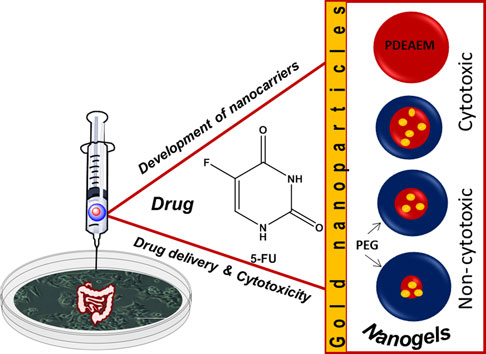Crossref Citations
This article has been cited by the following publications. This list is generated based on data provided by
Crossref.
Gonzalez-Urias, Alejandra
Zapata-Gonzalez, Ivan
Licea-Claverie, Angel
Licea-Navarro, Alexei F.
Bernaldez-Sarabia, Johanna
and
Cervantes-Luevano, Karla
2019.
Cationic versus anionic core-shell nanogels for transport of cisplatin to lung cancer cells.
Colloids and Surfaces B: Biointerfaces,
Vol. 182,
Issue. ,
p.
110365.
Manzanares-Guevara, Lizbeth A.
Licea-Claverie, Angel
Oroz-Parra, Irasema
Bernaldez-Sarabia, Johanna
Diaz-Castillo, Fernando
and
Licea-Navarro, Alexei F.
2020.
Smart Nanoformulation Based on Stimuli-Responsive Nanogels and Curcumin: Promising Therapy against Colon Cancer.
ACS Omega,
Vol. 5,
Issue. 16,
p.
9171.
González-Urías, Alejandra
Manzanares-Guevara, Lizbeth A.
Licea-Claveríe, Ángel
Ochoa-Terán, Adrián
Licea-Navarro, Alexei F.
Bernaldez-Sarabia, Johanna
and
Zapata-González, Iván
2021.
Stimuli responsive nanogels with intrinsic fluorescence: Promising nanovehicles for controlled drug delivery and cell internalization detection in diverse cancer cell lines.
European Polymer Journal,
Vol. 144,
Issue. ,
p.
110200.
Garcia-Carrasco, Melissa
Picos-Corrales, Lorenzo A.
Contreras-Angulo, Laura
Gutiérrez-Grijalva, Erick P.
Angulo-Escalante, Miguel Angel
Licea-Claveríe, Angel
and
Heredia, J. Basilio
2024.
Loading and release of phenolic compounds from mexican oregano (Lippia graveolens) in different Cationic-PEGylated matrixes and their effect on CACO-2 and CCD-18co cells.
Journal of Drug Delivery Science and Technology,
Vol. 100,
Issue. ,
p.
106037.
Manzanares-Guevara, Lizbeth A.
Gasperin-Bulbarela, Jahaziel
Cabanillas-Bernal, Olivia
Renteria-Maciel, Monserrat
Licea-Claverie, Angel
Méndez, Eugenio R.
Licea-Navarro, Alexei F.
and
Chapman, Robert
2024.
Preparation of pH-sensitive nanogels bioconjugated with shark antibodies (VNAR) for targeted drug delivery with potential applications in colon cancer therapies.
PLOS ONE,
Vol. 19,
Issue. 1,
p.
e0294874.
